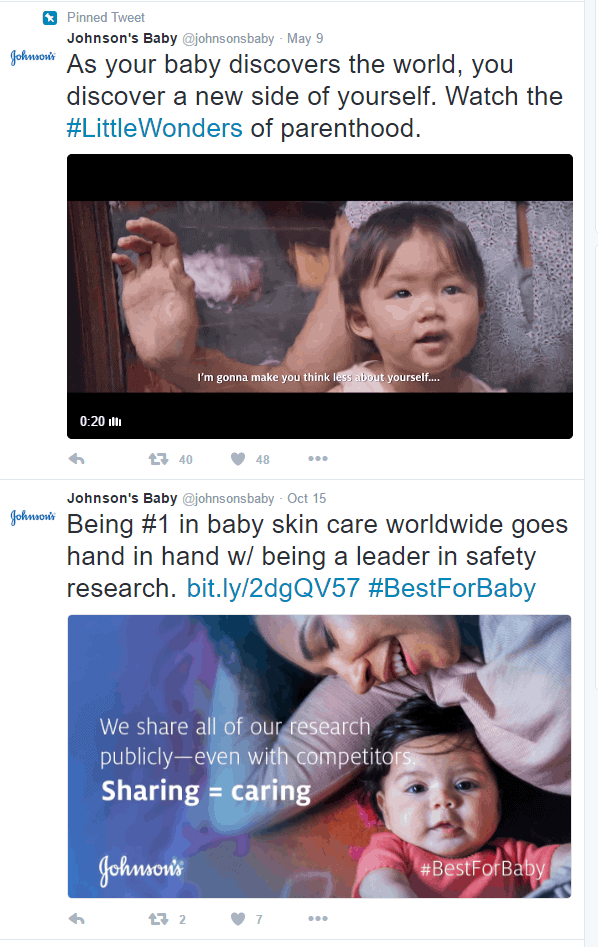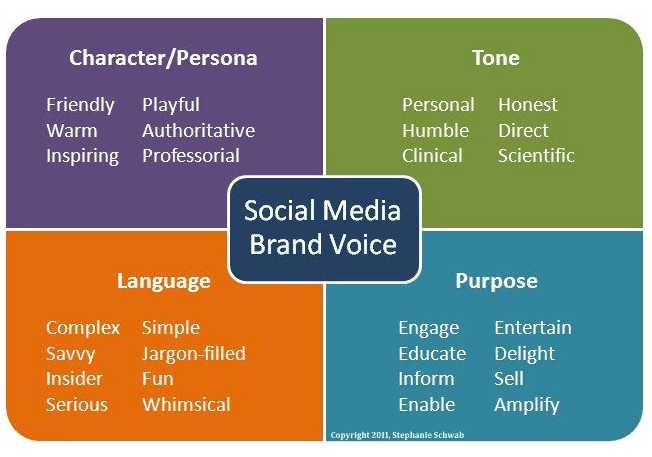Your social media posts say a lot about your brand. But are they saying the right thing?
Because social media has become such a vital part of digital marketing, many businesses have found themselves creating hasty profiles on three or four social media platforms, and posting what they can when they can – sometimes, simply just to maintain a presence on the channel.
While this is a fairly common situation, even among large enterprises with lots of resources, it’s hardly ideal. The problem is that you’re not telling a unified story. You’re not speaking with a defined, recognizable brand voice. And that means that you’re missing out on a major opportunity to connect with your customers.
How do you go from having a haphazard social media presence to one that clearly identifies what your brand is all about? The key is developing your brand voice. Follow these five steps to get started.
1. Delve into your company’s culture.
Your brand voice is really an expression of your company culture, so a good place to start is to spend some time defining that culture. Is your company youthful and on-trend, like PopSugar? Or is it established and traditional, like Farmers Insurance Co.? Do you embrace risk, or avoid it? Is the culture lively, academic, warm, intellectual…you get the picture.
Once you’ve come up with a few adjectives to describe your general company culture, you’ve got a basic blueprint for your brand’s voice – a persona. But a basic blueprint isn’t quite enough. You want to be able to fill in the details, too.
To do that, start thinking about how you and your colleagues talk about your brand. How do you talk about it with each other? How do you talk about it with your clients? Are there specific topics that are important to your brand’s mission?
The answers to all of these questions will come into play as you develop your brand voice.
Example:
Dove Beauty Care is one of the greatest examples of how a brand can develop an authentic and important social media voice. If you’re not familiar with Dove and its social mission, all you have to do is take a look at their Twitter profile.
With just a single glance, you can tell what Dove is about: women, girls, beauty, and self-esteem. As you read through their tweets, you see posts on topics like body-shaming, negativity online, and how to talk to your daughter about self-esteem.
Dove’s brand voice, we see, is empowering, uplifting, and inspirational. The company has honed this voice to perfection, and it’s kept up along all their social media channels.
That’s not to say that you need to have an explicit social message the way that Dove does, because that’s not right for every company. However, your brand voice does need to go deeper than your product or service – it needs to express what your company is all about.
2. Establish your tone (or tones) by identifying your customers.
Once you’ve gotten a handle on your brand’s voice by looking inward, to your company, it’s time to develop your tone. To do that, you have to start looking outward.
Tone is, in essence, a subset of voice. While you have one brand voice, you can have several different tones that you use for different audiences or different situations.
Your customer personas will give you some guidance here. If you’re a large enterprise with many products aimed at different types of consumers – think Johnson & Johnson, which makes both medical devices and consumer baby products, for example – then you may have separate social media profiles for each product group, each with its own tone.
Take a look here at the Johnson’s Baby Twitter account, versus the corporate Johnson & Johnson (JNJCares) Twitter account:


Each profile offers different types of information in a different tone – Johnson’s Baby is more personal, while Johnson & Johnson is rather formal, focused more on facts and figures. But both convey a consistent brand voice, which is responsible, knowledgeable, and caring.
Here’s a great graphic by Stephanie Schwab of Social Media Explorer that explains how tone plays into your brand voice.

Just as the tone is an element of brand voice, so too are your persona (as mentioned earlier), language, and purpose. Language means, simply enough, the words you choose to speak to your customers, while Purpose refers to why you’re speaking to them at all. That could be to educate them on a specific product or topic, to engage them in a discussion of a particular issue, to entertain them with silly GIFs every Friday, etc.
When you’re dealing with multiple social media profiles or multiple customer groups, your tone and purpose may change; however, in general, your persona and language will stay roughly the same.
3. Cultivate authenticity.
No matter what your brand voice is like, it’s got to be authentic if it’s going to be effective. Social media is about conversing and engaging with your supporters, not disseminating product specs (although it can be used for that as well, if done sparingly and carefully).
A good brand voice will sound like a person, not a faceless company. Take Thrillist, a men’s lifestyle newsletter that’s aimed at young urban professionals. Their social media voice is irreverent, funny, and a bit snarky – kind of like the best bro-friend in every male comedy.

Having a clearly defined brand voice will go a long way toward helping you achieve this authenticity. Why? Because when the people who are posting for your brand know what that voice is, they’re freer to be themselves – within those specific guidelines, of course.
4. Think before you post.
This goes without saying, but it still bears repeating. It’s important to have a consistent presence on social media, yes – but you don’t want to post simply for the sake of posting. Doing this makes it more likely that you’ll post something that’s out of sync with your brand voice. And trust us: your followers will notice.
A good rule of thumb when you post as your brand is to ask yourself these two questions:
- Does this offer value to my followers? (Remember, entertainment is valuable, too – a post doesn’t always have to convey information in order to be of value.)
- Does this fit my brand voice?
5. Get personal.
If you want to make the jump from a great brand voice to a truly outstanding one, then get personal with your fans and followers.
One of the best things about social media is how easy it makes connecting with others, no matter who or where they are. Take advantage of this! Talk to your supporters one-on-one. Thank a fan for saying something nice about your brand. Address complaints by apologizing directly to the person who’s complaining.
Getting personal goes hand-in-hand with cultivating authenticity and will go a long way toward making your brand feel more like a person and less like an entity that just wants to sell you stuff.
Developing an outstanding brand voice on social media is a process – the more you hone that voice, and the more you post content that’s valuable to your followers, the stronger your brand will become. Want to learn more about how to make your content great? Read our post “5 Marketing Secrets Every CMO Should Know.”







